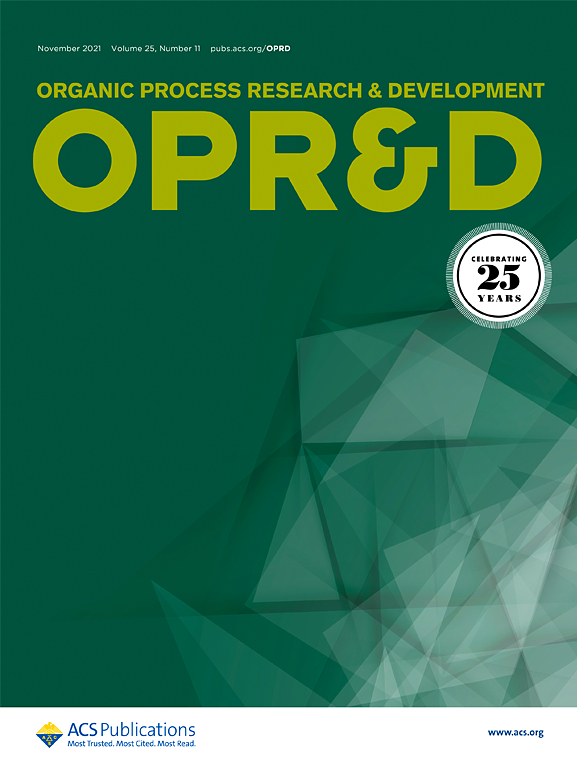Drug Substance and Drug Product Workflows for Quality Risk Management for the Presence of Nitrosamines in Medicines
IF 3.5
3区 化学
Q2 CHEMISTRY, APPLIED
引用次数: 0
Abstract
The ICH M7 guidance “Assessment and Control of DNA Reactive (Mutagenic) Impurities in Pharmaceuticals to Limit Potential Carcinogenic Risk” requires that drug substances and drug products be assessed for potential mutagens including N-nitroso compounds. N-Nitrosamines are a class of N-nitroso compounds within the cohort of concern as defined in ICH M7 because they can display carcinogenic potency with acceptable intakes in the range of ng/day rather than μg/day. Therefore, control to levels below the ICH M7 threshold of toxicological concern may be required. Following the detection of certain simple N-nitrosamines in marketed medicines between 2018 and 2019, health authorities requested that marketing authorization holders assess all their products (both chemical entities and biologics) for the presence of N-nitrosamines. It became important to establish scientifically robust and reliable approaches for the assessment of small molecule drug substances and products for the potential presence or formation of N-nitrosamines. Included are workflows and associated guidance to enable the reader to risk assess drug substances and drug products that contain chemical entities for the potential presence or formation of N-nitrosamines. These workflows and guidance are the culmination of five years of cross industry collaborations. They are based on known and emerging risk factors for the presence and formation of N-nitrosamines. In combination with regulatory guidance, these are considered as a “best practice” within the Pharmaceutical Industry for conducting drug substance and drug product assessments.

药品中存在亚硝胺的原料药和药品质量风险管理工作流程
ICH M7指南“评估和控制药品中DNA活性(致突变)杂质以限制潜在致癌风险”要求对原料药和药品进行潜在致突变剂评估,包括n -亚硝基化合物。n -亚硝胺是ICH M7中定义的一类n -亚硝基化合物,因为它们在可接受摄入量为ng/天而不是μg/天的范围内可以显示致癌效力。因此,可能需要控制到低于ICH M7毒理学关注阈值的水平。继2018年至2019年在上市药品中检测到某些简单n -亚硝胺之后,卫生当局要求上市许可持有人评估其所有产品(化学实体和生物制剂)是否存在n -亚硝胺。重要的是建立科学可靠的方法来评估小分子原料药和产品是否可能存在或形成n -亚硝胺。包括工作流程和相关指南,使读者能够对含有n -亚硝胺潜在存在或形成的化学实体的原料药和药品进行风险评估。这些工作流程和指导是5年来跨行业合作的成果。它们基于n -亚硝胺存在和形成的已知和新出现的风险因素。结合监管指导,这些被认为是制药行业进行原料药和药品评估的“最佳做法”。
本文章由计算机程序翻译,如有差异,请以英文原文为准。
求助全文
约1分钟内获得全文
求助全文
来源期刊
CiteScore
6.90
自引率
14.70%
发文量
251
审稿时长
2 months
期刊介绍:
The journal Organic Process Research & Development serves as a communication tool between industrial chemists and chemists working in universities and research institutes. As such, it reports original work from the broad field of industrial process chemistry but also presents academic results that are relevant, or potentially relevant, to industrial applications. Process chemistry is the science that enables the safe, environmentally benign and ultimately economical manufacturing of organic compounds that are required in larger amounts to help address the needs of society. Consequently, the Journal encompasses every aspect of organic chemistry, including all aspects of catalysis, synthetic methodology development and synthetic strategy exploration, but also includes aspects from analytical and solid-state chemistry and chemical engineering, such as work-up tools,process safety, or flow-chemistry. The goal of development and optimization of chemical reactions and processes is their transfer to a larger scale; original work describing such studies and the actual implementation on scale is highly relevant to the journal. However, studies on new developments from either industry, research institutes or academia that have not yet been demonstrated on scale, but where an industrial utility can be expected and where the study has addressed important prerequisites for a scale-up and has given confidence into the reliability and practicality of the chemistry, also serve the mission of OPR&D as a communication tool between the different contributors to the field.

 求助内容:
求助内容: 应助结果提醒方式:
应助结果提醒方式:


